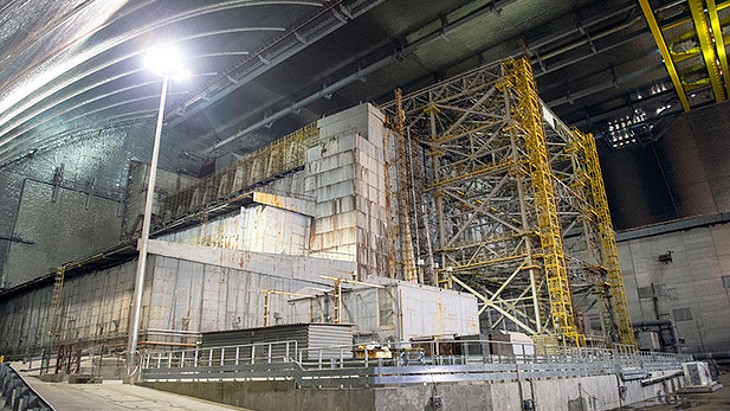Chernobyl gets six-year extension for work on original shelter

The licence for the storage of radioactive waste within the shelter has been extended from 2023 to 2029, with a 2025 deadline for the development of a new design for the dismantling of "unstable structures with an unacceptably high probability of collapse", and a 31 October 2029 deadline for completion of the dismantling.
The Shelter Object - also known as the 'sarcophagus' - still contains the molten core of the reactor and an estimated 200 tonnes of highly radioactive material. The stability of the structure has developed into one of the major risk factors at the site. A project to shore up the structure was completed in mid-2008, but at that time the maximum life of the stabilised structures was determined as the end of 2023.
According to the site operator, the "fast pace of its construction and extreme radioactive strain on the building staff caused the construction defects ... actually, at the time of Shelter facility acceptance for commissioning it was clear that the newly constructed facility was only a makeshift solution ... and the foremost task was the development of a new facility design (which has been done with the New Safe Confinement) which would isolate reliably the Chernobyl disaster epicentre from the environment as well as enable the disassembling of the precarious shelter".
The original deadline had been to complete the work by the end of October 2023, however a series of issues have been cited for the delay - including funding delays, the impact of COVID-19 and the Russia-Ukraine war which saw Russian forces occupy the site for two months in 2022.
The site operators said that as a result of these factors they "and contracting companies carried out additional surveys of the building structures, made estimates of the structures’ durability and supporting capability. Technical reports on the results of these activities underpinned the substantiation of the shelter operation period extension. Based on this substantiation, the State Nuclear Regulatory Inspectorate of Ukraine made a decision to approve the alterations to the licence".
The original shelter over the destroyed unit 4 at Chernobyl was constructed at pace, and the international Shelter Implementation Plan in the 1990s had three phases - firstly to stabilise it and secondly to build a larger secure construction to enclose it - the New Safe Confinement which was completed in 2017 to pave the way for the dismantling and decommissioning stage.
According to World Nuclear Association, the hermetically sealed New Safe Confinement (NSC) "will allow engineers to remotely dismantle the 1986 structure that has shielded the remains of the reactor from the weather since the weeks after the accident. It will enable the eventual removal of the fuel-containing materials in the bottom of the reactor building and accommodate their characterisation, compaction, and packing for disposal. This task represents the most important step in eliminating nuclear hazard at the site - and the real start of dismantling."
The NSC is the largest moveable land-based structure ever built - with a span of 257 metres, a length of 162 metres, a height of 108 metres and a total weight of 36,000 tonnes equipped - and with a lifetime of 100 years has been designed to allow for the eventual dismantling of the ageing makeshift shelter from 1986 and the management of radioactive waste. It has also been designed to withstand temperatures ranging from -43°C to +45°C, a class-three tornado, and an earthquake with a magnitude of 6 on the Richter scale.
Because of its vast dimensions the structure had to be built in two halves which were lifted and successfully joined together in 2015. The process of sliding the entire arched structure from its assembly point into position over unit 4 was completed on 29 November 2016. The original licence, from the State Nuclear Regulatory Inspectorate of Ukraine, for decommissioning was issued in 2019 following fitting out and more than a year of pilot operation and testing of the New Safe Confinement building.
Read More: World Nuclear Association's guide to the Chernobyl accident



_49215.jpg)





_66488.jpg)


